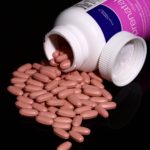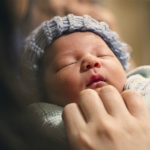Autism spectrum disorders (ASDs), which include childhood autism, autistic disorder, Asperger syndrome, atypical autism, and other pervasive developmental disorders, are characterized by social and communication difficulties and by stereotyped or repetitive behaviors and interests. It is estimated that autism spectrum disorders affect about 1% of children.
While genes play a significant role in the risk of autism, and can be identified in up to 25% of children with autism, there has been increasing interest in examining whether environmental factors also play a role in the development of childhood autism. Various environmental exposures have been implicated, including vaccinations, mercury, air pollution, insecticides, and infection, as well as more recently, psychiatric medications including SSRIs (see previous blog post) and other classes of medications such as valproate (Depakote).
Prenatal exposure to valproate has been associated with an elevated risk (10%) for a broad range of congenital malformations including spina bifida, as well as adverse neurodevelopmental sequelae, such a lowered IQ and developmental delays in offspring. As a result, the American Academy of Neurology has recommended avoidance of valproate during pregnancy whenever possible.
In addition to these risks, several preliminary case series have suggested that fetal valproate exposure may also increase the risk of autism. However, the magnitude of this association has been unclear due to the methodological limitations of such reports.
Now, new data adds the risk of autism spectrum disorders to the list of possible negative outcomes from prenatal valproate exposure. In a recent study,Christensen and colleagues report the results of a population-based study of 655,615 children born in Denmark from 1996 to 2006. Children were followed from birth for a maximum of 14 years. Among these children, 5437 were identified as having autism spectrum disorders (absolute risk of 1.53%), including 2067 with childhood autism (absolute risk 0.48%).
Among the 508 children exposed to valproate, the researchers observed an increased risk of autism spectrum disorder (4.5%) and childhood autism (2.50%) as compared to children not exposed to valproate. This risk remained elevated even when controlling for epilepsy and psychiatric illness, suggesting the effect of valproate on risk for autism is independent of the underlying illness. Moreover, children of women who had previously used valproate and stopped it at least 30 days prior to conception were not at increased risk for autism. Exposures to carbamazepine (Tegretol), oxcarbazepine (Trileptal), lamotrigine (Lamictal), and clonazepam (Klonopin) monotherapy were not associated with an increased risk of autism spectrum disorder and childhood autism.
Strengths of the study as discussed by Meador and colleagues in an accompanying editorial, include the fact that it was a large, population-based study with a relatively long follow-up period of 14 years. Moreover, less that 3% of the subjects were lost to follow-up, thus reducing the risk for selection bias. The authors also adjusted for a large number of potentially confounding risk factors for autism including maternal and paternal age at conception, parental psychiatric history, gestational age, birth weight, sex, congenital malformations and parity. However, limitations of the study include inadequate information about perinatal folate supplementation, the use of alcohol or illicit drugs during pregnancy, and possible missed psychiatric diagnoses in the patients.
The study also did not find that higher doses of valproate were associated with a higher risk of autism which would be expected of a teratogen such as valproate . Such a dose-response relationship has been demonstrated in multiple studies with respect to risk for malformations and cognitive impairment, but was not found in this study.
Despite these limitations, these data provide the strongest evidence to date that fetal valproate exposure is associated with an increased risk of autism and autism spectrum disorders. These data add to the accumulating evidence linking fetal valproate exposure to a host of adverse neonatal outcomes. Therefore, the use of valproate in women of childbearing age should be minimized and alternative medications should be considered if at all possible.
Since 50% of pregnancies are unplanned in the United States, it is also imperative to inform women of childbearing age of these potential treatment risks of prenatal valproate exposure well in advance of pregnancy. Moreover, if no alternative effective treatment can be found, the lowest possible effective dose of valproate should be used which has been shown to reduce the risk for congenital malformations and developmental delays in other studies. A dosage of less than 1,000 mg /day is generally recommended. Folic acid supplementation (4 mg/day) in addition to prenatal vitamins is also recommended during preconception and throughout pregnancy in order to minimize these risks.
Adele Viguera, MD
Christensen J, Grønborg TK, Sørensen MJ, Schendel D, Parner ET, Pedersen LH, Vestergaard M. Prenatal valproate exposure and risk of autism spectrum disorders and childhood autism. JAMA. 2013: 24;309(16):1696-703
Meador KJ, Loring DW. Risks of in utero exposure to valproate. JAMA. 2013: 24;309(16):1730-1








Leave A Comment